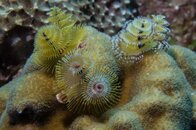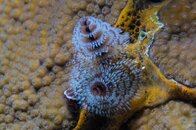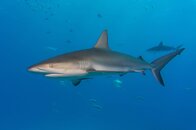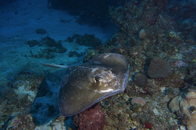Hi,
@Pyndle.
Beware....long post ahead!
I recently got into underwater photography after being comfortable topside with manual. I have the RX100 and can speak to that way more than the A6500. I can tell you that I easily pack 5kg of gear wiith my RX100; however, I have 2 strobes, a wide angle lens with the dome port, a macro lens, a few sets of strobe and camera batteries with their respective chargers, arms and floats, and spare parts and o-rings. Not having the wide angle lens and/or dome port will eliminate a few pounds. It's a bit of a commitment in that regard.
As for shooting wide angle and macro on the same dive, there are a few ways to look at this.
- You can shoot wide angle in just the housing as is or you can get a wide angle lens. Add a dome port in and you get even wider. It allows you to be closer to your subject while capturing a very wide scene which eliminates or minimizes backscatter. The further you are from your subject, the more sediment in the water is between you and your subject and the more likelihood of capturing that backscatter. Additionally, color drops off significantly with distance, even with strobes. You can get strobes with a higher guide number so that they are more powerful but in general, being closer to your subject is ideal. Below is a great example that I found when I was shopping for equipment and deciding on wide angle lenses with dome ports. In the picture below, the top left photo shows the photographer taking a photo without a wet lens or dome port.The top right photo shows the addition of a wet lens. The bottom left shows the addition of a wet lens with dome port. All the photos are taken from the same distance. As you can see, you are able to capture a much wider scene without having to back up or lose color as strobe lighting falls off.
- I don't bother with shooting wide angle and macro on the same dive if I have to do a lens switch. It's a hassle - mounting the lens or storing it - and possibly losing it or damaging it when you do the switch. I went muck diving recently and I have a macro lens that is on a flip mount so that allowed me to shoot macro and with the housing as-is. I did that and it was fine. Would I switch back and forth between a wide angle lens with or without a dome port and macro on the same dive? Absolutely not. There are some people that will tell you that it's not practical or that you should just commit to one or the other for a particular dive. I suggest that if you go this route, don't get a macro lens that you have to screw and unscrew. Flip it out of the way and don't worry about losing anything. I was on a trip recently and I could tell when my dive buddy was shooting macro as opposed to regular when I heard the squeaking of the threads when he put the macro lens on.
Some of the benefits of the more expensive housings are the build quality and the functions and features as well as depth ratings. Some housings can go to 130ft while others can go to 300ft. Some allow you to use some functions but not all of the camera while others give you full use of the camera because you have access to all the controls and buttons as if it were not in a housing. Polycarbonate vs machined aluminum, etc. There are some housings that come with a leak detector alarm so when it senses moisture, it goes off. You can then tilt your camera a down so that water pools towards the lens and and preserve the camera body as you end the dive. When you pair this with a vacuum valve with a visual confirmation that you have a seal, it's a solid system together. Nauticam's is color coded. Green means you have a seal, yellow means your vacuum seal is lower than it was before and may be compromised so you should check, and red is you no longer have a vacuum seal. If you get a yellow, you probably aren't flooded yet but that would be a good indicator you should end your dive and surface to look into it before it actually goes red AND you hear the water alarm.
You'll have to weigh the cost/benefits of a housing. If you don't dive very often it may be hard to justify a more expensive housing. I dive 2-3 times a year in 2-3 week stints, 30-50 dives at a time. I wanted something that would last and I wanted peace of mind because there is already so much to worry about before splashing in the water so I opted for the higher end housing. I am very glad I made the investment into Nauticam because it is so easy to use and gives me such peace of mind. I love it, especially when I have to open it up on a day boat that might not have camera facilities (air gun, tables, dunk tanks, etc.).! I am still very diligent with my o-rings on the housing regardless of having the system. I still do have insurance on it which would cover flooding. You'll have to think about the lens options for the A6500 and think about how that will affect your housing options. It's also one more thing to have to worry about and carry before, during, and after dives from a luggage and maintenance standpoint.
If you could only pick between a wet lens and a strobe, I would definitely get the strobe. 2 is ideal. In the beginning, you may want to leave the strobe on auto. With experience, you can use manual to get the right strobe power and exposures. If you are deciding between buying a wide angle wet lens and a macro lens and only plan on getting 1 for now, I would probably suggest that you get a macro lens. You will notice a much bigger difference in what you can shoot with a macro wet lens vs what you can shoot without it because of minimum focus distances. Without a wide angle lens, you will still be able to shoot larger scenes, you will just have to be further away from the subject. However, with macro, if you don't have the macro lens, you won't be able to capture the detail that you may be looking for.
@mi000ke brought up some great points and I think it's important to go with a camera you are comfortable with. I could use the RX100IV in my sleep from the extensive use I had with it on land while traveling. (So light and compact!)
I'm including some photos below in case you find it helpful. Macro photos are first, wide angles are toward the bottom. I do not have any photos without any wet lens on, unfortunately, so I can't give you a comparison of that. Feel free to PM me as well!
Below is an example of an emperor shrimp on a very large sea cucumber that I took. You can see the bumps on the cucumber. The shrimp itself , according to Wikipedia, is about 4 millimetres (0.16 in) to 7.6 millimetres (0.30 in). I would not have been able to capture this detail without the macro lens. (This was using a Nauticam CMC on a RX100IV with Sea & Sea YS-D2 strobes.) I included a few other macro shots. At the bottom are some examples of wide angle shots with the wide angle wet lens + dome port.
Goby and crab on whip coral.
The eel stirred up a bit of sand as he was coming out which is showing up as backscatter in this photo. I was trying to focus on his eyes but didn't want to get any closer with those teeth so I decided to take a photo of his teeth instead.
Juvenile anemone fish on a carpet anemone. He was a tiny little dude!
Here are some wide angle photos using the Inon UWL-H100 with dome port on the RX100IV.








